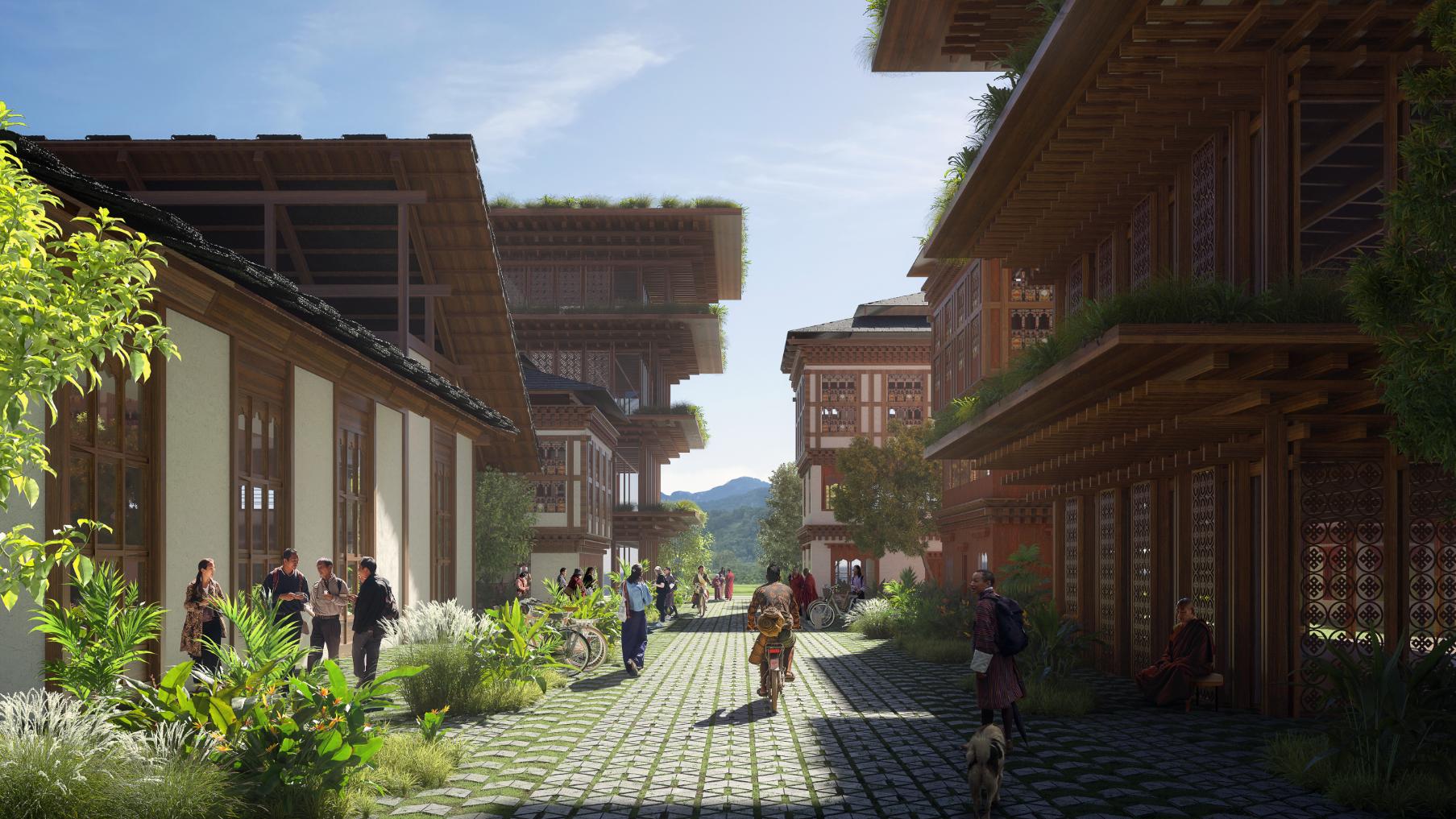Bhutan News
Bhutan wants to create the world’s first ‘Mindfulness City’

The trailblazing endeavor would see the conception of Gelephu, a city that redefines urbanism through a lens of mindfulness, aiming to foster holistic well-being and sustainable development

The trailblazing endeavor would see the conception of Gelephu, a city that redefines urbanism through a lens of mindfulness, aiming to foster holistic well-being and sustainable development
The world’s happiest country, Bhutan, has announced an ambitious plan to create the world’s first ‘Mindfulness city’. On the 17th of December 2023, Bhutans’ 116th National Day, King Jigme Khesar Namgyel Wangchuck presented his vision for Bhutan to become an economic hub for South Asia and shared his desire to develop the Gelephu Mindfulness City Special Administrative Region (SAR) in the South of the Kingdom, through investments in green energy, physical land, digital connectivity, infrastructure and education.
Small countries like Bhutan are not trapped by legacy and can be innovative in implementing plans that other countries might hesitate to pursue. The masterplan plan for the ambitious Mindfulness City is unique for being founded on Bhutanese values and the Gross National Happiness philosophy and would prioritise not only economic development but personal well-being.
International architect and design group, Bjarke Ingels Group (BIG) shared their response to the Mindfulness City master plan, which brings The King’s vision to life. The plan proposes a series of bridges as new landmarks tailored to each of the nine Gross National Happiness domains, agricultural preservation, mobility connections, public spaces and low- to mid-rise development in the south of Bhutan.
It would amplify Bhutan’s abundant biodiversity, as it stands as one of the last biodiversity hotspots in the world, with 70 per cent of the country covered in forest. The Mindfulness City would cover an area of over 250,000 acres – around 2.5 per cent of the total surface area of the country.
Each neighbourhood in the master plan is designed based on the principles of the Mandala: a series of infrastructure and dwellings organised symmetrically around a central public space. If the master plan is realised, the city will exhibit a gradual transition in density, created from small buildings dispersed in the landscape in the north to larger footprints within an urban environment in the south. To protect existing and future development against flooding in the monsoon season, paddy fields will be established along the site’s rivers and tributaries, running from north to south. These will further function as biodiversity corridors for local flora and fauna.
Landmark bridges would connect neighbourhoods and double as transportation infrastructure, combined with civic and cultural facilities, creating a series of ‘inhabitable bridges’ tailored to each of the nine Gross National Happiness domains. Each bridge would house critical destinations within the city: the new airport, a Vajrayana spiritual centre, a healthcare centre, a university, a hydroponic and aquaponic greenhouse, a cultural centre and a market adorned with Bhutanese textiles. The final bridge would pose as a hydroelectric dam, constructed on the city’s western border with a step-well retaining wall that offers viewpoints, staircases for meditative walks and a temple.
The first milestone in the SAR’s development was the ground-breaking ceremony for the new international airport, which took place on December 23 2023, while the railway dry port is currently under construction.
Latest Articles
Don't miss the latest from Luxury Travel
